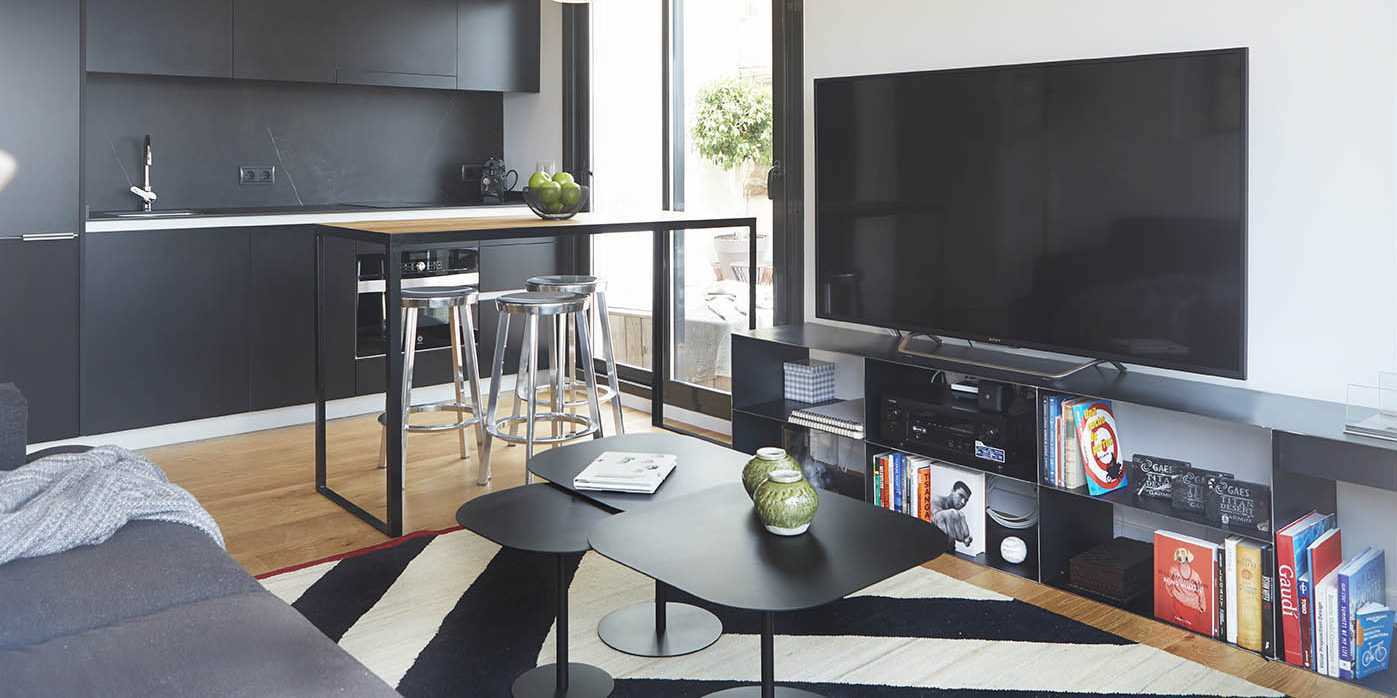Ideas to harmonize the size of the table with the rest of the elements
The coffee table is a key piece, where the rest of elements such as the sofa, the rug or the TV orbit around this surface that has multiple uses and works as a connector with the living room furniture.
One of the issues to address when choosing the size of the table is a correct scale with respect to the rest of actors in the room because, for example, a table that is too small, in addition to not offering a functional dimension, modifies the visual perception of the size of the sofa or carpet, if any.
In this sense, the choice of the coffee table can be based on factors such as dimensions, distance from other elements, the size of the room or the versatility that the design can offer. The balance in the dimensions helps to compose a visual harmony.
Therefore, so that you can choose the right size, today at the blog of Coblonal Interiorismo we offer you some keys that we have learned throughout our experience and we hope that they are useful in choosing the ideal size of the coffee table for your home.
Some ideas about dimensions and distances

A recommended height is that it does not exceed the edge of the sofa, otherwise its use could be uncomfortable. Although everything depends on each project and case, as well as on the sofa, the standard height is about 40 cm.
On the other hand, a sufficient distance between the sofa and the table helps ensure circulation between both furniture without discomfort. In that sense, although there are no rules, about 50cm would suffice for this function.
If you are thinking about incorporating a carpet, it can be interesting to leave about 50cm-60cm between the edge of the table and the carpet. This helps maintain balanced proportions.
Ways to balance the stay

Something apparently trivial as the form, becomes an interesting detail to reconcile the dimensions of the room and add an accent from the aesthetic and decorative point of view.
On the other hand, shape and size can help emphasize strong points, as well as weak ones.
An example of this is that if the size of the room or sofas are smaller, a discreet round table would help create an elegant and dynamic stay regardless of its size.
A rectangular or square table adds something more robust to indicate the table as a central element at the functional and aesthetic level in the room.
Versatility as dimensional and functional support

An advantage that provides the conceptual projection of the design is the possibility of creating a versatility in the elements that result in a different configuration both in the same element, as in the panoramic of the room.
In this way, a coffee table can provide a very interesting versatility to adapt to the environment.
For example, a coffee table could contain tables of different deployable sizes, others have raised heights and interchangeable drawers to reconfigure the table.
In short, when choosing the size of the table there are no universal standards, perhaps the most interesting is to adapt the dimensions and the aesthetic framework to the function that you are going to give to find a table that suits your lifestyle and preferences. Since, after all, one of the visions of architecture and interior design is to surrender to the vital needs of people, do not you think?
